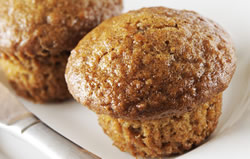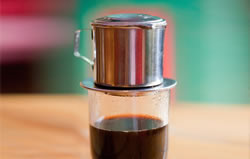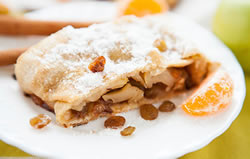
Thank you for registering to receive additional information about the health benefits of Sweet'N Low to share with your patients and clients. Please enjoy the latest issue of our e-Newsletter, developed specifically for health professionals like you!
Spotlight on Sweetness:We asked Dr. Abe Bakal, Chief Technical Advisor for Sweet'N Low, to share his wealth of knowledge on our favorite little pink packets in this two-part interview series. See below for Part 2 of the interview where Dr. Bakal separates facts from fiction relative to saccharin, the main sweetening ingredient of Sweet'N Low. In this study conducted in the 1970’s, rats that were fed extremely high levels of saccharin – roughly the equivalent of 2,500 packets of Sweet’N Low per day, every day of their life, including gestation – exhibited higher incidence of bladder cancer than the control group. As a result of this rat study, the FDA announced a ban on saccharin. Following a public out roar, Congress mandated that a warning label be placed on products that contained saccharin while further research was conducted. |
Recipes
Banana Bran Muffins

(Makes 1 dozen muffins)
Ingredients
1 cup sifted all-purpose flour
6 packets Sweet 'N Low® zero calorie sweetener
1 teaspoon baking powder
1 1/2 cups bran flakes cereal
1 teaspoon baking soda
3/4 cup low-fat milk
2 tablespoons margarine, melted
4 teaspoons honey
2 tablespoons Agave In The Raw® (or brown sugar)
1/2 cup mashed banana
1 egg, beaten
Preheat oven to 425°F. Spray muffin tins with nonstick coating agent.* In medium-size bowl, sift together flour, Sweet 'N Low, and baking powder; stir in bran cereal. In separate bowl, dissolve baking soda in milk. Blend margarine, honey, Agave In The Raw (or dark brown sugar), banana, and egg together and then combine with milk mixture. Beat with fork or whisk to mix thoroughly. Make a well in center of dry ingredients. Pour in liquid ingredients; stir quickly until dry ingredients are just moistened and mixture is still slightly lumpy. Divide batter into muffin cups, filling each two-thirds full. Bake 15 to 20 minutes, or until toothpick inserted in center comes out clean. Loosen edges of muffins. Let stand 1 or 2 minutes. Turn onto cooling racks.
Note: By substituting 2 tablespoons liquefied Butter Buds® for the margarine in this recipe, you can save 15 calories, 2 g fat, 6 mg cholesterol, and 5 mg sodium per muffin.
Note: There's no need to spray with a nonstick coating agent if you own a nonstick muffin tin.
Per serving: 100 Calories, 20 mg Cholesterol, 185 mg Sodium, 18g Carb, 3g Protein
Vietnamese Coffee Recipe

(Makes 1 serving)
Ingredients
1/2 cup low-fat (2 percent) evaporated milk
1 packet Sweet'N Low® zero calorie sweetener
3/4 cup freshly brewed strong coffee, preferably French Roast, not espresso
In a small saucepan, simmer the milk over medium heat until it is reduced by half (approx. 5 minutes). Skim off any skin that forms. Pour the 1/4 cup hot milk into a small mug, preferably clear glass. Add the Sweet'N Low® zero calorie sweetener, and coffee. Serve immediately.
Per serving: 120 Calories, 10 mg Cholesterol, 147 mg Sodium, 15g Carb, 10g Protein
Apple Strudel

(Makes 6 servings)
Ingredients
3/4 pound Golden Delicious apples, peeled, cored and coarsely chopped
1/4 cup golden raisins
2 packets Sweet'N Low® zero calorie sweetener
1/2 teaspoon ground cinnamon
4 sheets (13-inches x 18 inches) phyllo dough
3 tablespoons unsalted butter, melted
3 tablespoons whole-wheat breadcrumbs
Set a rack in the center of the oven. Preheat the oven to 375° F. Line a baking sheet with aluminium foil and coat the foil with cooking spray, and set aside.
In a mixing bowl, combine the apples, raisins, Sweet'N Low® zero calorie sweetener, and cinnamon. Set aside.
Lay a dishtowel on a work surface with a long side facing you. Place one sheet of the phyllo on the towel with a long side towards you. Cover the remaining sheets covered according to package directions. Brush the phyllo with butter and sprinkle on 1 tablespoon of the breadcrumbs. Repeat the same process with a second and a third sheet of phyllo, each time carefully placing the new phyllo sheet carefully on top of the previous sheet. Add the fourth sheet of phyllo, and brush lightly with butter. Arrange the apple mixture on the top phyllo rectangle leaving 3 inches uncovered at all of the ends. Lift the far edge of the towel and bring it towards you. Fold in the ends, then roll the strudel towards you, effectively folding the strudel in half long-wise. Using 2 wide pancake turners, carefully transfer the strudel to the prepared baking sheet, seam side down. Brush the top of the phyllo with the remaining butter.
Bake the strudel for 40 minutes, or until lightly brown. Cool it on the baking sheet. Use a serrated knife to cut the strudel into 6 servings. Serve warm or at room temperature. The strudel is best served the day it is made.
Per serving: 153 Calories, 89 mg Sodium, 23g Carb, 2g Protein, 2g Dietary Fiber
Visit us on Facebook at:
![]()
Follow us on Twitter at:
![]()
© Copyright 2013 Cumberland Packing Corp.
For questions or comments, email info@sweetnlowprofessional.com
Permission to reprint information on this site in whole or in part is granted, provided customary credit is given.

